CZ: Stručný přehled základních pojmů
Noční obloha plná hvězd fascinovala již naše dávné předky. Časem si začali všímat, že stejné hvězdy a jejich seskupení se nachází ve stejném ročním období na stejném místě oblohy. Zejména s rozvojem zemědělství se začalo postavení hvězd využívat jako kalendářní mezníky – k určení období pro přípravu půdy, setí, sklizni atd. S rozvojem mořeplavectví se začaly hvězdy využívat pro orientaci na širém moři. Pro lepší orientaci při určování jednotlivých hvězd lidé začali ty nejjasnější propojovat spojnicemi a vznikající obrazce dokreslovali na podoby zvířat či bájných bytostí. K základní orientaci na obloze sloužily jasné hvězdy, tedy takové, které se nám jeví jako „větší“, více svítící než většina okolních hvězd. Aby byla hvězda jasná, musí se nacházet relativně blízko nebo vydávat hodně světelného záření. Jasnost hvězdy udáváme v hvězdné velikosti neboli v magnitudách (mag). Český termín hvězdná velikost nemá přímou souvislost s rozměry hvězdy. Už starořečtí astronomové dělili hvězdy do šesti skupin podle magnitudy: nejjasnější 1. mag, nejslabší okem viditelné 6. mag. Zdánlivé hvězdné velikosti hvězd závisí na jejich vzdálenostech, osvětlení totiž ubývá s druhou mocninou vzdálenosti. Bude-li hvězda dál, bude slabší - její magnituda by byla vyjádřena větším číslem. Proto jim říkáme hvězdné velikosti zdánlivé.
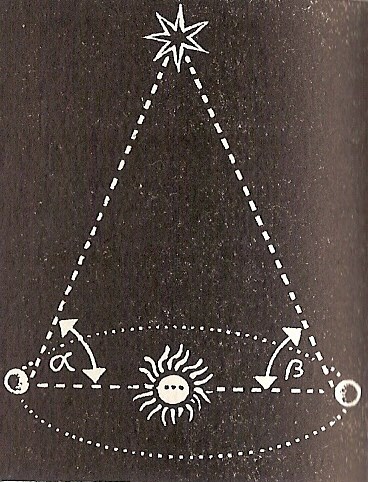 Vzdálenost hvězd se určuje řadou metod. Základní je výpočet pomocí goniometrických funkcí z trojúhelníku tvořeného dvěma krajními body oběžné dráhy Země kolem Slunce a měřenou hvězdou (viz obrázek). Výchozími veličinami pro výpočet jsou průměr oběžné dráhy Země (2 AJ, tedy cca 300 milionů km) a naměřené úhly alfa a beta. Další rozšířená metoda využívá speciálních vlastností proměnných cefeid. Jako jednotek pro měření mezihvězdných vzdáleností se používá světelný rok (l.y.) a parsec (pc).
Vzdálenost hvězd se určuje řadou metod. Základní je výpočet pomocí goniometrických funkcí z trojúhelníku tvořeného dvěma krajními body oběžné dráhy Země kolem Slunce a měřenou hvězdou (viz obrázek). Výchozími veličinami pro výpočet jsou průměr oběžné dráhy Země (2 AJ, tedy cca 300 milionů km) a naměřené úhly alfa a beta. Další rozšířená metoda využívá speciálních vlastností proměnných cefeid. Jako jednotek pro měření mezihvězdných vzdáleností se používá světelný rok (l.y.) a parsec (pc).
Tato keš se zabývá pouze hvězdami vzdálenými méně než 100 světelných let.
EN: A brief overview of basic concepts
Night sky full of stars has fascinated people since time immemorial. Over time they started noticing that the same stars and their groupings always appear at the same place on the sky in the same time of year. With the development of agriculture in particular, stars started to be used as milestones in the calendar determining the right time to work the soil, sow, harvest, etc. With the development of seafaring, people began to use stars for navigation. For easier recognition of individual stars, people started interconnecting the brightest ones into patterns in the shape of animals or mythical creatures. Bright stars were used for basic orientation in the sky, i.e. those that appear as "bigger", more luminous than others. For a star to be bright, it must be relatively close or emit light more intensively. The measure of brightness of stars is called magnitude (mag). The magnitude, however, has nothing to do with the actual size of the star. Ancient Greece astronomers divided stars into six groups according to magnitude: the brightest stars were of first magnitude, whereas the faintest ones visible to the naked eye were of sixth magnitude. The apparent magnitude depends on the distance of the star, as the light flux decreases with the square of the distance. The farther away a star is, the weaker it will appear weaker - its magnitude would be higher. Therefore, we call them apparent magnitudes. Distance of stars can be determined by a variety of methods. The basic calculation is using trigonometric functions from a triangle formed by two extreme points of the Earth's orbit around the Sun and the star being measured (see figure). The variables for the calculation include the diameter of the Earth's orbit (2 AU, or about 300 million kilometres) and angles alpha and beta as measured. Another widespread method uses special properties of so-called Cepheid variables. Unit for measuring interstellar distances include light year (ly) and parsec (pc).
This cache deals only with stars closer than 100 light years.


CZ: Pro porovnání velikosti souhvězdí na obloze slouží bílá úsečka na okraji mapek, která odpovídá deseti stupňům - to je asi 20 průměrů slunce nebo měsíce.
EN: For comparison of the size of constellations in the sky, there is a white line on the edge of the charts corresponding to ten degrees - about 20 diameters of the Sun or the Moon.
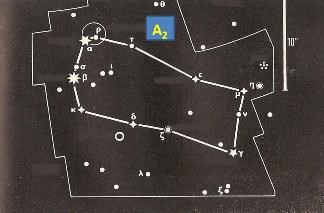
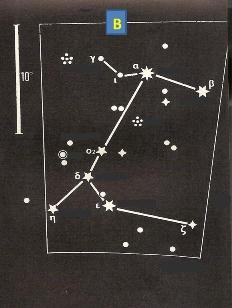

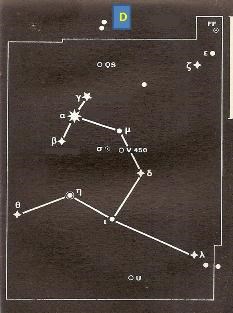
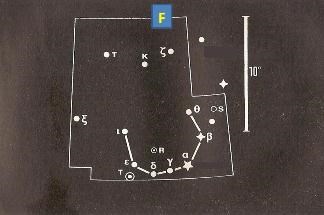
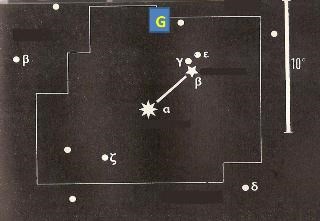
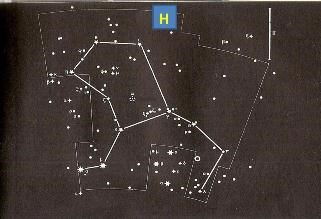
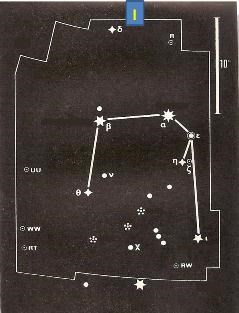
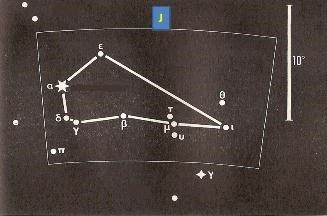

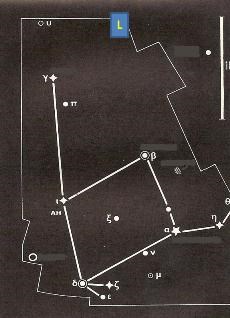
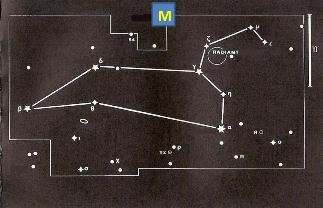
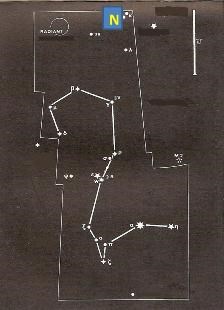
Určení souřadnic:/How to determine the coordinates:
Do finálního vzorce:/Replace the characters in the final formula:
N A2Bo BC.DFG E HDIo JK2.LMN
dosadíte…(Jistě už víte co!? Pokud ne, koukněte na hint!) / with... (You surely know with what! If not, take a peek at the hint!)